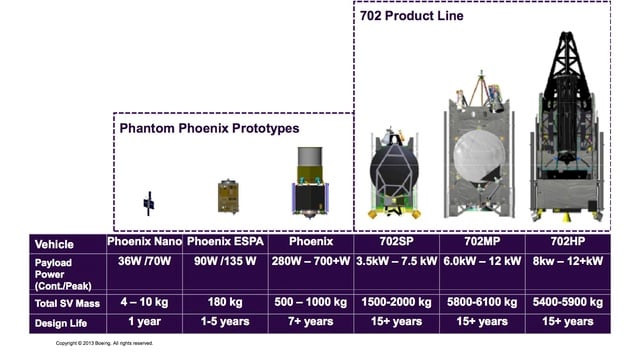Big Boeing Targets Small Satellite Market; Not ORS, But Much Faster Than Usual
Posted on
 COLORADO SPRINGS, NATIONAL SPACE SYMPOSIUM: The Boeing Company, better known for building big satellites in clean rooms and charging big prices for them, has spotted what it thinks may be a sweet spot in the satellite market and plans to build prototypes of three small satellites to show the market what it can do.
COLORADO SPRINGS, NATIONAL SPACE SYMPOSIUM: The Boeing Company, better known for building big satellites in clean rooms and charging big prices for them, has spotted what it thinks may be a sweet spot in the satellite market and plans to build prototypes of three small satellites to show the market what it can do.
The “key” reason for building smaller satellites very quickly is to avoid being left behind by Moore’s Law, which says that computer processing power doubles every 18 months, Bruce Chesley, director for advanced space and intelligence systems at Boeing said. “It’s taking advantage of smaller cheaper components and taking advantage of Boeing’s quality control and procedures.”
The new satellites will share “a common architecture, flight software and simplified payload integration options” (also known as plug and play). The likeliest types of sensors, said Boeing officials: weather.
Why weather? The Air Force, the Department of Commerce (NOAA), and the rest of the federal government (not to mention Northrop Grumman) completely botched the requirements and design of what were supposed to be the nation’s bedrock weather satellites, known as NPOESS. Thus the hunger for smaller, simpler, faster and cheaper weather satellites. Alex Lopez, vice president for advanced network and space systems, said the market over 10 years would be in the billions, but he declined to be more specific. (Eds. note: Corrected Alex’s last name. 5:18 pm)
“Our customers need greater mission flexibility from smaller satellites that can be built more affordably, and delivered more quickly, without sacrificing quality,” Boeing Phantom Works President Darryl Davis said in a statement. Davis and other Boeing officials would not disclose likely customers — not even if they were more likely to be civilian or military.
Up to six satellites could be lofted into space in a single mission, reducing the Holy Grail of space costs: launch.
The Phantom Phoenix prototypes will be built in three configurations:
• Phantom Phoenix — 500 to 1,000 kg mid-class; designed for single and dual launch.
• Phantom Phoenix ESPA — 180 kg ESPA-class; attaches to a common interstage adapter allowing for the launch of more than one satellite at a time.
• Phantom Phoenix Nano — 4 to 10 kg nanosatellite; offers affordable technology for science and weather missions.
I asked Chesley and Lopez if their prototyping efforts could be considered part of Operationally Responsive Space (ORS), the effort to build smaller satellites quickly and more cheaply and to have them on the shelf ready to go. Using the official definition of ORS, which requires that satellites be on the shelf and ready to go in a few days, Lopez said that wasn’t the case. Instead, Boeing would be able to accept an order. “We would be able to make a sale today if there were a sale to be had,” he said.
Subscribe to our newsletter
Promotions, new products and sales. Directly to your inbox.
